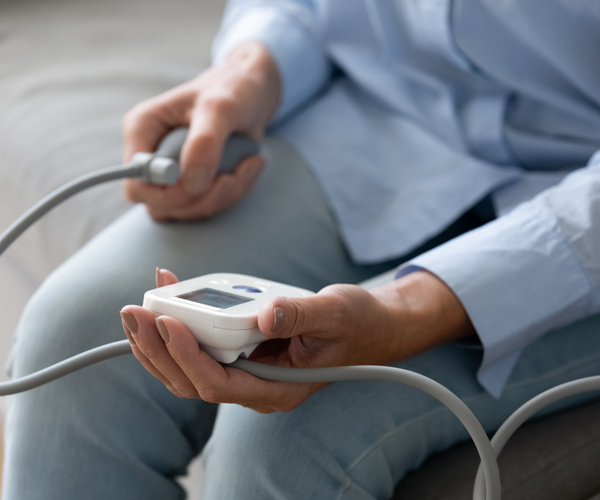Blood pressure dips upon standing might not be as dangerous as thought

From Newsmax
A common condition called “orthostatic hypotension” — a sudden drop in blood pressure when standing up — has long been tied to the potential for dangerous falls in older people.
But a new study suggests that doctors who manage blood pressure in older patients shouldn’t worry that their treatments are more hazardous for folks with the condition.
It “was not associated with a higher risk of cardiovascular disease events” such as heart attack or stroke, said researchers led by Dr. Stephen Juraschek, from Beth Israel Deaconess Medical Center and Harvard Medical School, in Boston.
In fact, his team also found that dips in blood pressure when standing up weren’t even linked to higher odds for fainting or falling.
The study did find that orthostatic hypotension was tied to a 77% higher chance for hospital admissions linked to low blood pressure, but it didn’t seem to matter if the patient’s blood pressure had been “aggressively” lowered by medications or not.
In other words, doctors shouldn’t feel shy about meeting clinical guidelines to aggressively treat high blood pressure — even when patients have orthostatic hypotension, the researchers found.
The new research was published Jan 27 in the journal Hypertension and relied on data from a major recent trial of thousands of U.S. adults over age 49, called the SPRINT trial. That trial helped change clinical practice when it found a real health advantage to the aggressive treatment of patients with high blood pressure.
But as Juraschek and his colleagues noted, physicians have worried that people who get “woozy” upon standing up due to a drop in blood pressure might be at higher risk of falling if they are also under tight blood pressure treatment.
The new study found those fears might be unfounded.
However, two heart specialists who weren’t part of the new study believe more research might still be needed.
Dr. Benjamin Hirsh directs preventive cardiology at Northwell Health’s Sandra Atlas Bass Heart Hospital in Manhasset, N.Y. As he explained, “orthostatic hypotension is a greater than 20 mm Hg drop in the blood pressure one minute upon standing, compared to the blood pressure when sitting or lying down.”
But Hirsh said that definition — used in the new study — doesn’t capture all episodes of the condition. For example, he said, “many dangers of treating [patients] for low blood pressure occur at nighttime, when the patient arises from prolonged sleep and then falls. This happens within one minute of standing — which is technically not ‘orthostatic hypotension.'”
And what if the patient has other conditions — such as diabetes, dementia or a prior stroke? “These patients were not included in the original SPRINT trial upon which this study’s analysis was performed,” Hirsh noted.
Dr. Michael Goyfman directs clinical cardiology at Long Island Jewish Forest Hills Hospital in New York City. He agreed with Hirsh that while the new findings have real value in guiding treatment, the study might not have included all forms of orthostatic hypotension.
The study “may have missed cases of OH that occur within the first minute, or when changing positions from laying down to standing, as those do seem to be associated with falls and lower blood pressures,” Goyfman said.
He also noted that the study didn’t include “non-injurious” falls in its calculation of whether or not orthostatic hypotension posed a fall danger.
“Could it be chance that makes a fall injurious versus non-injurious?” Goyfman said. “What if a patient fell onto a softer surface versus a harder one? Arguably, all falls should be included in the analysis.”
For now, many physicians might still be reluctant to aggressively treat people whose blood pressure numbers drop when they stand up, he said.
“I do not feel this will significantly change current practice until more randomized trials are performed confirming absence of adverse outcomes from orthostatic hypotension,” Goyfman said.
© HealthDay
For more on this story go to: https://www.newsmax.com/health/health-news/blood-pressure-orthostatic-hypotension/2020/01/29/id/951806/?ns_mail_uid=6952f1f9-507d-4a20-8cc0-0a1db158d76e&ns_mail_job=DM87210_01302020&s=acs&dkt_nbr=0105027rbvac





